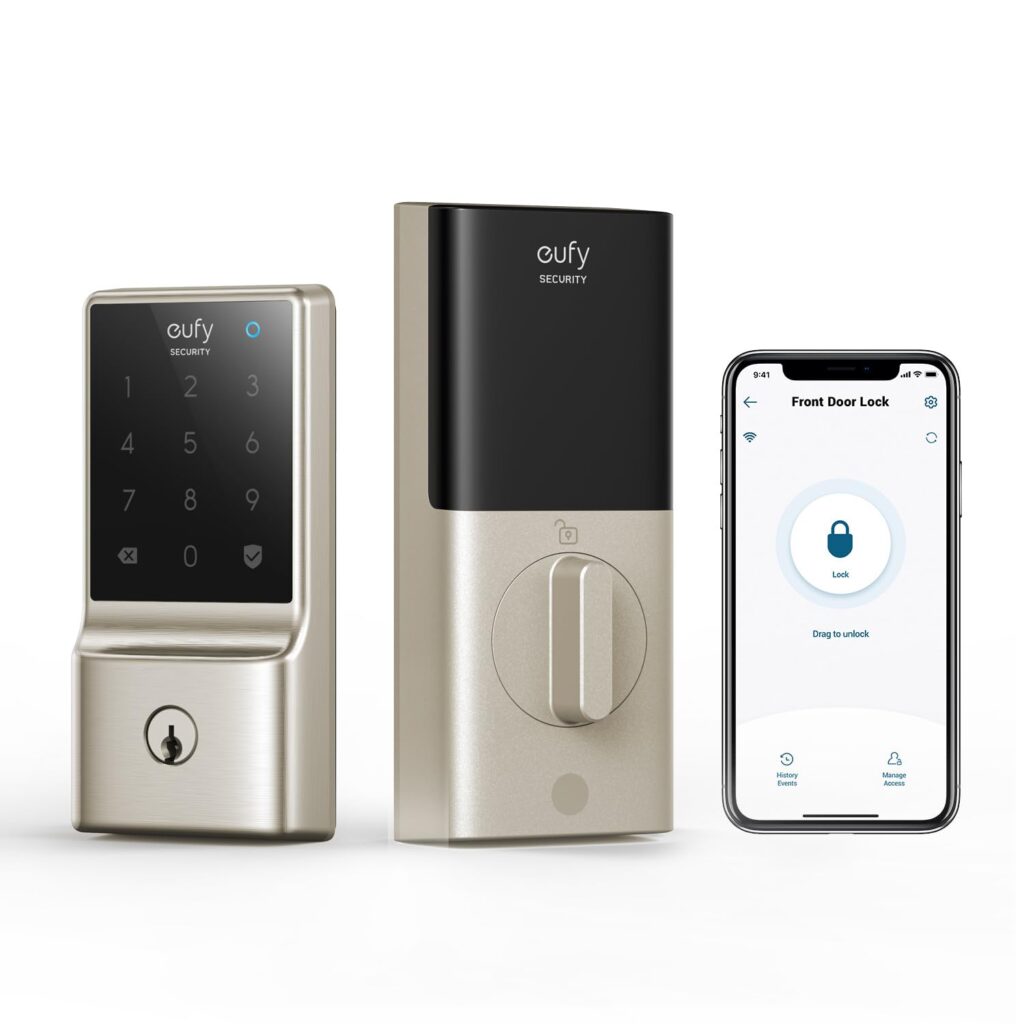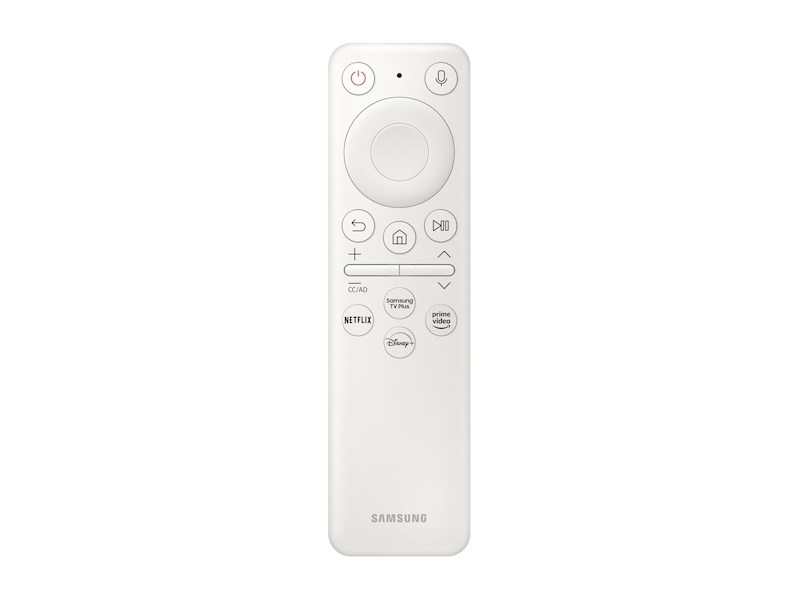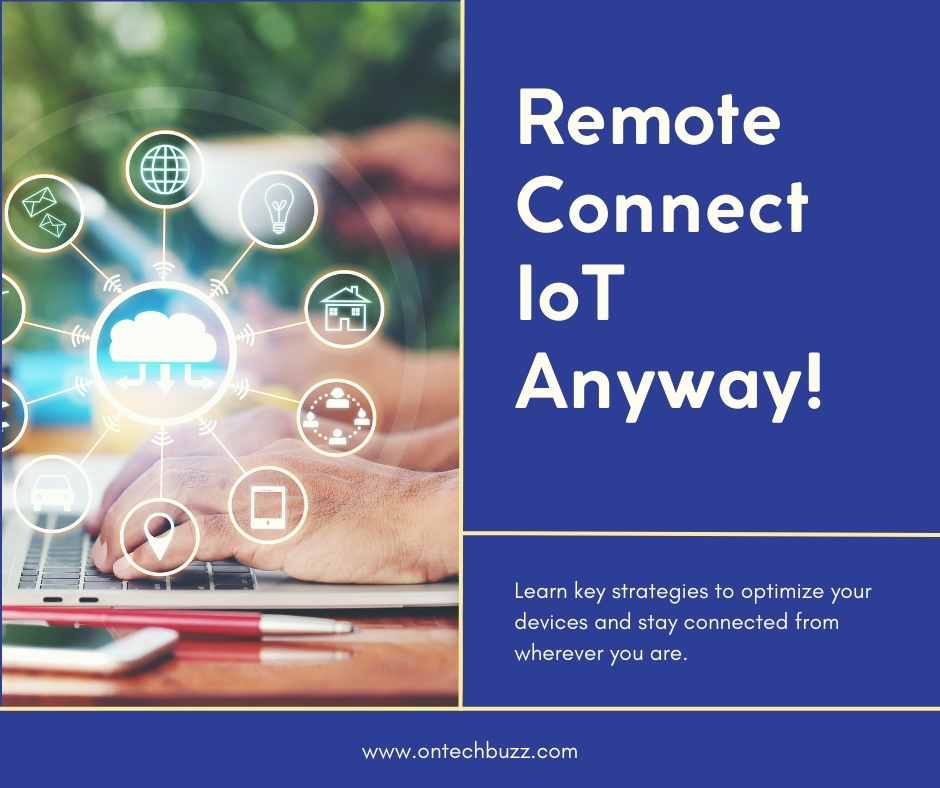
Step into the dynamic world of IoT connectivity with our seasoned writers as your guides. Uncover the secrets to mastering Remote Connect IoT Anyway through expert strategies, compelling narratives, and cutting-edge insights. Join us on a captivating exploration of the Internet of Things, where innovation meets connection, and stay ahead in the ever-evolving tech landscape with our thought-provoking content.
Remote Connect IoT is a technology that enables remote access to IoT devices anywhere. It connects various sensors and machines over the internet.
In an age where connectivity spells efficiency, Remote Connect IoT stands as a pivotal element. It simplifies the way businesses monitor, manage, and obtain data from their devices across vast distances. By leveraging this technology, companies can make informed decisions based on real-time data, hence optimizing their operations.
This method offers a seamless experience and ensures that devices are accessible, even when physical presence is impossible. It fosters innovation, enhances productivity, and provides the backbone for numerous modern IoT applications. As the Internet of Things expands, Remote Connect IoT remains essential for any enterprise aiming to harness the full potential of its connected assets.
Table of Contents

Credit: www.samsung.com
Seamless Iot Integration Challenges
The realm of the Internet of Things (IoT) is rapidly expanding, driving innovation and connectivity across various industries. While the potential and benefits of IoT are clear, integrating these devices seamlessly remains a complex challenge that concerns many organizations. Let’s delve into the multifaceted world of IoT integration, discussing its importance, common obstacles, and strategies for security and compatibility resolutions. With the right approach, seamless IoT integration can unlock new levels of efficiency and service.
Importance Of Remote Connectivity In Iot
Remote connectivity stands as the cornerstone of IoT functionality. It allows devices to transmit data, receive updates, and connect to centralized systems from any location. This connectivity paves the way for advanced monitoring, predictive maintenance, and real-time decision-making. Industries ranging from healthcare to transportation rely heavily on uninterrupted IoT connections to streamline their operations and enhance user experiences.
Common Integration Obstacles For Remote Iot Devices
Despite the significant advantages, integrating remote IoT devices is fraught with challenges. Achieving a seamless ecosystem involves navigating:
- Device Heterogeneity: A vast array of devices with different protocols and specifications often leads to compatibility headaches.
- Network Reliability: Consistent and secure network connections are crucial, though difficult to maintain in various environments.
- Power Consumption: Ensuring energy-efficient operation while maintaining continuous connectivity is another puzzle to solve.
- Scalability: Solutions must be agile to adapt to growing numbers of devices and data volumes.
Overcoming Security And Compatibility Issues
Addressing security and compatibility issues is pivotal for robust IoT integration. These strategies can enhance security and ensure smoother compatibility:
| Strategy | Description |
|---|---|
| Unified Standards: | Implementing universal protocols and IoT frameworks to simplify communication between devices. |
| Advanced Encryption: | Utilizing state-of-the-art encryption methods to protect data in transit and at rest. |
| Regular Updates: | Maintaining up-to-date firmware and software to shield against vulnerabilities. |
| Compatibility Layers: | Designing middleware that acts as a translator between various devices and platforms. |
Incorporating these measures, together with rigorous testing and continuous monitoring, can help overcome integration barriers, promoting a secure and harmonious IoT ecosystem.
Unveiling Iot Integration Secrets
In a world where IoT (Internet of Things) technology is rapidly advancing, the ability to integrate various devices and systems seamlessly is more crucial than ever. As businesses aim to harness the power of IoT, understanding the underlying integration secrets can lead to a robust and efficient IoT ecosystem. This section explores the pivotal components of an agile and dynamic IoT architecture.
Leveraging Apis For Flexible Iot Architecture
- Accessibility to a wide range of devices and services
- Real-time data exchange to aid decision-making processes
- Customization and integration with existing enterprise systems
By utilizing Application Programming Interfaces (APIs), businesses can create an IoT architecture that is not only flexible but also future-proof. APIs facilitate the connection between different software components and hardware devices, making them the linchpin of IoT scalability and interoperability.
Utilizing Cloud Platforms For Enhanced Connectivity
Cloud platforms have emerged as the backbone for IoT connectivity, providing the necessary infrastructure to collect, process, and store vast amounts of data generated by IoT devices. Benefits of cloud platforms include:
- Global accessibility – allowing device management from anywhere.
- On-demand scalability – to handle variable workloads.
- Data security – through advanced encryption and authentication protocols.
Adopting Open-source Tools For Scalability
Open-source tools are an excellent choice for businesses looking to maintain a scalable and cost-effective IoT solution. These tools often come with an extensive support community and provide the following advantages:
| Open-Source Tool | Advantage |
|---|---|
| Linux | Flexibility and security for IoT operating systems |
| Mosquitto | Lightweight messaging broker for MQTT protocol |
| Node-RED | Easy-to-use IoT programming tool for building workflows |
Adopting these open-source tools not only ensures easy integration but also offers the flexibility to adapt to new technologies while controlling overhead costs.
Remote Connect Iot Anyway: Key Strategies

Welcome to the innovative world of remote connectivity where Internet of Things (IoT) strategies redefine the way we interact with devices across distances. Remote Connect IoT Anyway has emerged not just as a trend but as a necessity, offering breakthrough tactics to overcome challenges affiliated with managing and harnessing the power of IoT devices from afar. Emphasizing key strategies ensures that businesses unlock the full potential of IoT applications seamlessly and securely. Let’s delve into the essential approaches for optimizing remote connectivity.
Simplifying Device Management Remotely
The management of IoT devices on a massive scale requires robust and intuitive strategies. Streamlining these processes is fundamental for efficiency and effectiveness. Using advanced management platforms enables administrators to:
- Maintain firmware and software updates
- Monitor device statuses and health indicators
- Configure devices for optimal performance
- Remotely troubleshoot and resolve issues
These platforms leverage cloud-based solutions, providing a centralized hub for administrators to oversee all connected IoT assets, no matter their physical location.
Ensuring Reliable Data Transfer Protocols
Successful IoT operations depend on the seamless transfer of data. Ensuring this requires a focus on:
- Implementing secure protocols that protect the integrity and confidentiality of data.
- Choosing protocols that support efficient bandwidth utilization to handle large volumes of IoT data transmissions.
- Integrating failover mechanisms to maintain data flow, even in the event of network disruptions.
Adopting protocols such as MQTT, CoAP, and HTTPS, which are specifically designed for IoT environments, enhances performance and reliability. End-to-End Encryption (E2EE), in particular, fortifies the data against external threats, safeguarding sensitive information during transit.
The Role Of Edge Computing In Remote Connectivity
Edge computing transforms how data is processed in IoT ecosystems. It brings computation and data storage closer to the source of the information. This decentralized approach:
- Reduces latency
- Improves response times
- Decreases reliance on continuous cloud connectivity
- Addresses bandwidth constraints
When IoT devices are distributed across remote locations, edge computing proves invaluable. This strategy facilitates real-time analytics and decision-making, enabling businesses to react swiftly to changing conditions and maintain uninterrupted operations.
As we navigate the complexities of Remote Connect IoT Anyway, these key strategies lay the groundwork for a robust and dynamic IoT framework. By simplifying device management, ensuring reliable data transfer protocols, and integrating edge computing, organizations can achieve a competitive edge in the era of digital transformation.
Iot Seamless Integration Techniques
Embracing the Internet of Things (IoT) revolution requires a smooth and secure integration of devices within existing systems. IoT Seamless Integration Techniques are paramount for businesses looking to leverage IoT technologies effectively. By implementing sophisticated integration methods, companies can ensure interoperability among diverse IoT devices and systems, enabling them to harness the full potential of IoT for improved decision-making and operational efficiency. Let’s explore some of the most advanced integration techniques ensuring seamless connectivity and security in the realm of IoT.
Advanced authentication mechanisms for secure access
Advanced Authentication Mechanisms For Secure Access
Security is at the forefront of IoT integration and advanced authentication mechanisms are critical to protect against unauthorized access. By utilizing multifactor authentication (MFA), encryption protocols, and biometric verification, IoT ecosystems can establish a robust security infrastructure.
- Multi-Factor Authentication: Requires users to provide multiple pieces of evidence before granting access, enhancing security beyond traditional passwords.
- Encryption Protocols: Secure communications between IoT devices and servers are essential to protect sensitive data in transit.
- Biometric Verification: Adds a layer of security that is uniquely tied to an individual, making it harder for intruders to gain access.
Using containerization to improve deployment efficiency
Using Containerization To Improve Deployment Efficiency
Containerization has emerged as a game-changer in IoT deployment, offering a lightweight and consistent environment for applications to run. Containers encapsulate application code with all its dependencies, ensuring that software operates reliably when moved from one computing environment to another. This enhances deployment efficiency and scalability significantly.
- Containers are easy to deploy and scale across multiple IoT devices and clouds.
- They facilitate continuous integration and continuous deployment (CI/CD) pipelines, allowing for frequent updates with minimal downtime.
- Resource isolation ensures that applications do not compete for system resources, maintaining system stability and performance.
Real-time monitoring and automated response systems
Real-time Monitoring And Automated Response Systems
IoT systems demand real-time monitoring to ensure smooth operations and immediate response to any anomalies. Automated response systems are integrated into IoT platforms to provide prompt actions based on the insights gathered from real-time data analysis.
| Feature | Benefit |
|---|---|
| Real-Time Alerts | Notifies administrators instantly of any irregularities or potential threats. |
| Automated Responses | Executes predefined actions to mitigate issues without human intervention. |
| System Health Checks | Continuously assesses the performance of IoT devices to prevent downtime. |
Future-proofing Iot With Remote Connectivity
As the Internet of Things (IoT) ecosystem expands, the importance of ensuring sustainable and adaptable connectivity options becomes paramount. Remote connectivity stands as a cornerstone in the architecture of future IoT systems, offering a myriad of benefits from real-time data access to enhanced control over devices scattered across various locations. To truly leverage the power of IoT, understanding how remote connectivity can future-proof these intricate networks is crucial. Businesses seeking longevity and resilience in their IoT investments will find great value in exploring the advancements in remote connectivity.
Predictive Analytics For Proactive Issue Resolution
Predictive analytics transforms how IoT systems operate, shifting from reactive to proactive maintenance. Through remote connectivity, IoT devices continuously transmit performance data, allowing for real-time monitoring and analysis. This enables the anticipation of potential issues before they escalate into costly downtimes.
- Monitor device health to predict equipment failures.
- Optimize maintenance schedules for efficiency and cost savings.
- Avoid disruptions in service by remedying issues swiftly.
Adapting To Evolving Network Technologies
The IoT landscape is ever-changing, with new network technologies emerging regularly. Seamless adaptation to these advancements is essential for the longevity of IoT systems. Remote connectivity offers the flexibility to upgrade and integrate with various protocols and standards, ensuring IoT infrastructures remain cutting-edge.
| Technology | Benefits |
|---|---|
| 5G | Faster speeds, reduced latency, increased connectivity |
| LPWAN | Long-range communication, low power consumption |
| Wi-Fi 6 | Improved efficiency, higher capacity, better performance in crowded areas |
Integration With Ai For Intelligent Automation
Artificial Intelligence (AI) and IoT are converging to create more intelligent and autonomous systems. Remote connectivity fuels this integration, providing the backbone for AI algorithms to operate on vast data sets generated by IoT devices. This union leads to smarter decision-making and enhanced automation capabilities.
- Automated data analysis for real-time insights.
- Self-learning systems optimizing device performance.
- Enhanced user experience through predictive personalization.
Frequently Asked Questions For Remote Connect Iot Anyway
How Can I Control My Iot Device Remotely?
To control your IoT device remotely, use its official app or web interface. Ensure your device is connected to the internet for access anywhere.
Is Iot Remotely Controllable?
Yes, IoT devices are designed for remote control, often through mobile apps or web interfaces, enabling users to manage them from anywhere.
What Is The Concept Of Remote Control In Iot?
The concept of remote control in IoT involves using internet connectivity to manage devices from a distance. This technology enables users to control, monitor, and manage connected devices through apps or web interfaces.
Is A Tv Remote Control An Iot Device?
A traditional TV remote is not an IoT device. However, smart remotes with internet connectivity features can be considered IoT devices.
Conclusion
Embracing IoT and remote connectivity stands as a transformative leap. It empowers businesses, enhances lifestyles, and redefines efficiency. Adopting this tech wave ensures you stay ahead in a digitally connected era. Leap into the future; let IoT connect you anywhere, seamlessly.
Embrace innovation, and thrive remotely.
2 thoughts on “Remote Connect IoT Anyway: Seamless Integration Secrets”